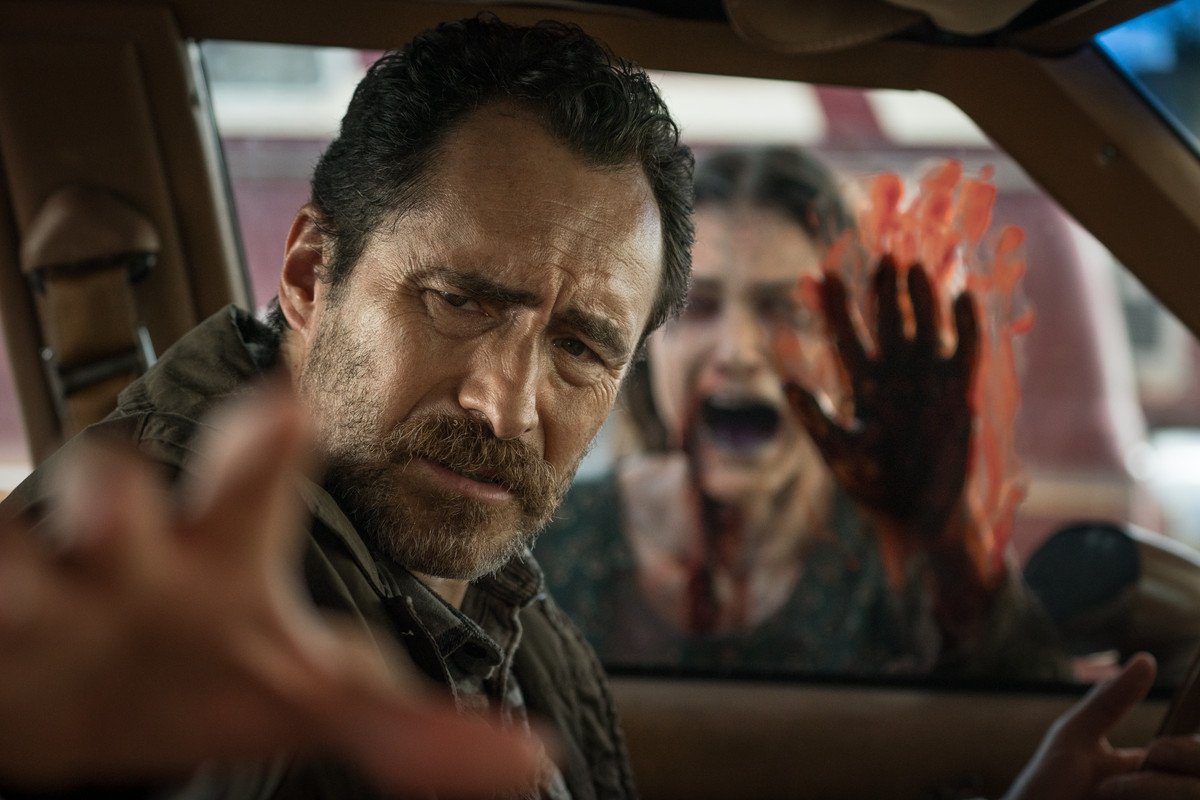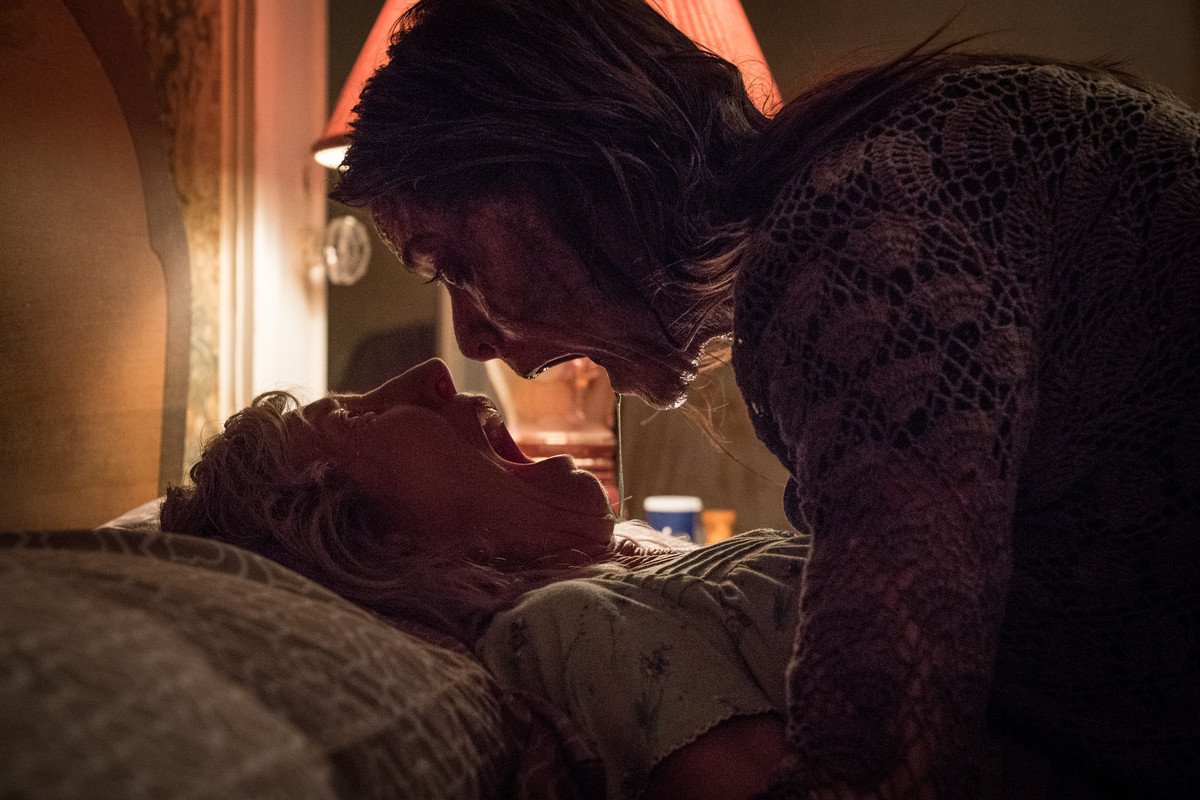It’s a ritual nearly as predictable as a Marvel movie in May or romantic movies in February: The first weekend of every January sees the release of a new horror movie. It’s remarkable enough that this once-barren weekend has been colonized into its own niche horror holiday. But in some cases, the movies have even been good — or at least respectable by the historically low standards of January movies. Sometimes those relaxed standards are a relief following a season of blockbusters and awards-bait. Movies like last year’s Escape Room or 2018’s Insidious: The Last Key are effective little genre pictures.
The Grudge, the newest American version of the 2002 Japanese horror film Ju-On, isn’t the best January horror movie of recent years. But it may be the most January. It doesn’t stand out in its low-rent cheapness; if anything, its pacing is stately and reserved compared to more desperate-to-shock jump-scare machines. Instead, this 2020 version of The Grudge has the weary, dispiriting feel of a January afternoon. It doesn’t have any snow or visible breath, but writer-director Nicolas Pesce (The Eyes of My Mother) uses a high-contrast but grainy color scheme, bleachy whites, and purposefully drab set decoration to give the movie’s generic suburban setting a gritty, overcast dreariness.
This gray feeling extends to the lead characters: Recently widowed Detective Muldoon (Andrea Riseborough), new to town with her young son and the usual boilerplate about how starting over will be good for them, looks exhausted before she even investigates the origins of a long-rotting corpse. Her new partner, Detective Goodman (Demián Bichir) chain-smokes in a dingy, cluttered house with dim, yellowish lighting.

The detectives’ investigation of the dead body in their midst is the narrative spine of this version of The Grudge. But like the 2004 U.S. remake and its 2006 sequel (both of which seem to be in continuity with this one, which takes place primarily in those past release years), the new movie uses intersecting stories across multiple timelines to look at a standard-issue stringy-haired vengeance ghost from different angles. There’s an old couple (Lin Shaye, from the Insidious series, and Frankie Faison) seeking the help of an assisted-suicide guru (Jacki Weaver), and a younger couple (John Cho and Betty Gilpin) grappling with a difficult choice in their pregnancy. They’re all connected to a house where the ghost hangs out, with a strong preference for the bathroom. There are shower, tub, and sink scares, recalling imagery from the original film’s mid-2000s heyday.
The parallel stories are all suffused with grief and loss, contributing to the movie’s wintry seriousness. (Though there’s one big tension-relieving laugh, a smash cut to a character zipping up her suitcase, intending to get the hell out.) The 2004 Grudge was also a somber affair, but it was part of a wave of PG-13 remakes of Japanese horror movies with most of the atmosphere drained away. Pesce has been given the leeway of an R rating, which he uses primarily to make every dead or undead body as grimy and rotten as possible. Even when characters survive, they’re physically marked by their experiences, like the man who survives a gunshot wound with his face healed into twisted scars. The film isn’t especially scary, but it has a creepy, pervasive grimness, well-acted by the impressive ensemble.

Yet it’s never clear what all of this grimness is actually for, or what the likes of Cho, Riseborough, Bichir, and the others are doing here. “This is never gonna end,” warns one of the characters who’s well-versed in the years-spanning haunting. They’re speaking aloud the subtext of any long-running horror franchise, especially a second-tier concern like the Grudge saga. But the film doesn’t connect that sentiment to the characters’ vivid traumas. Pesce doesn’t seem to have much to say about parental decisions, end-of-life conflict, or the hopelessness of grief.
This latest batch of existential complaints is all just Grudge fodder, which is especially strange given the way the movie must spell out the ghost’s origins at the top via onscreen text: The ghost/demon is summoned when a person dies in extreme anger. But because this ghost follows one character back from Japan as the movie begins, that initial anger (whether sourced from the earlier movies or not) is secondhand, unconnected to the rest of the characters’ stories.
So The Grudge skips straight into the hopelessness, sometimes bordering on nihilism, and Pesce’s style isn’t enough to enliven the downcast mood. It’s not unusual for a horror movie to reach a dead end of its own making, caught between a desire to resolve a story and to leave some tension hanging for a scare-hungry audience. When The Grudge feels a little worse than usual in this regard, it may have to do with release-date concerns beyond the film’s control. Pesce likely wasn’t writing or directing this movie with January 3rd in mind. But intentionally or not, the movie sets a glum tone. It almost seems to be saying: If you’re going to a new movie in January, you must be in a bad place — or want to get to one as soon as possible.
The Grudge is now in theaters.
























































